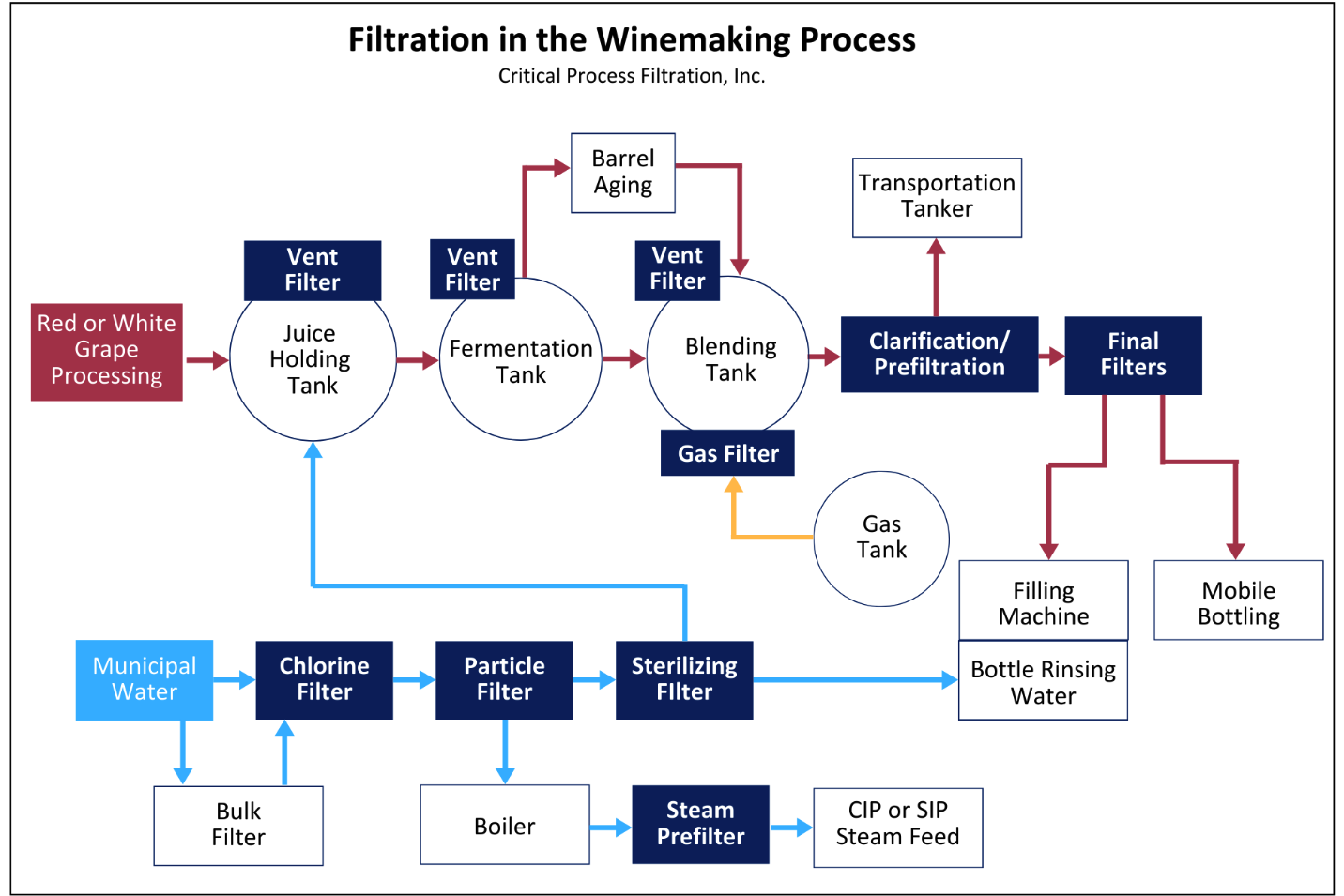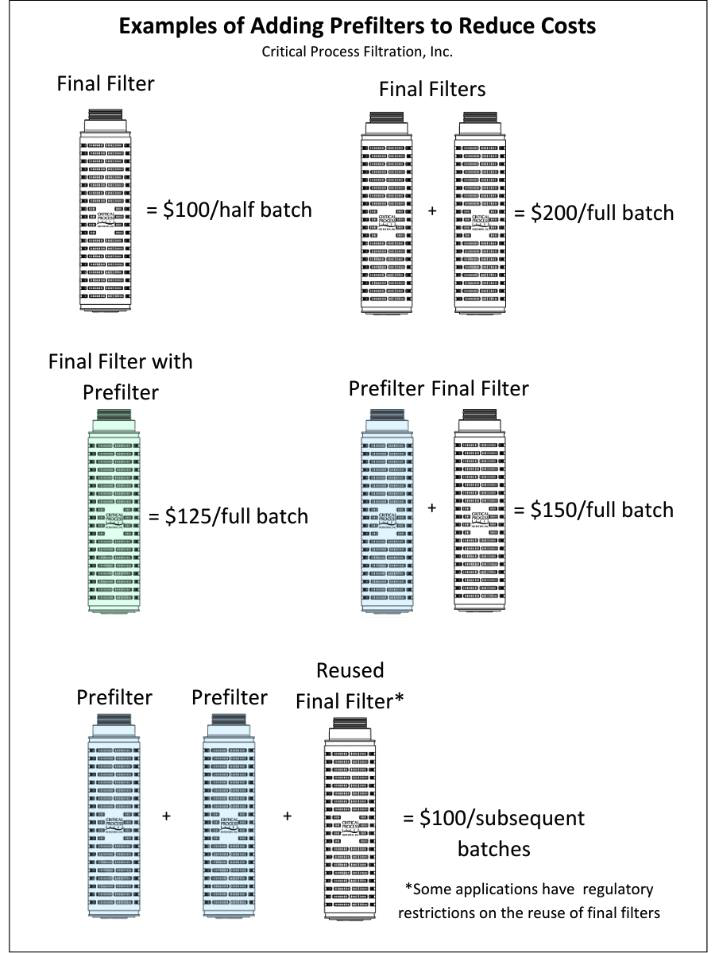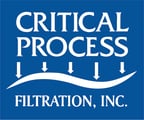Choosing the right filters for each application is critical for optimizing the winemaking process, and protecting the wine’s taste, quality and long-term stability.
When filtration plays a vital role in your winemaking process, a variety of filters are employed for different purposes:
- Clarification and Prefiltration
- Final filtration for stabilization
- Water filtration and purification for amelioration, bottle washing, and steam generation
- Vent and Gas filtration
This application summary will focus on the role, location, and type of filters employed throughout the winemaking process for wine stabilization and bottling.

Figure 1: Filtration in the Winemaking Process
Clarification and Prefiltration
After aging and before bottling, the wine goes through a series of processes for clarification and stabilization. The first of these processes uses Clarification or Prefiltration filters to remove sediment and other suspended particles, including Diatomaceous Earth (DE) when used in your process. Removing these unwanted particles reduces the amount of material that could negatively impact the flavor or aroma of the wine. They also serve to extend the life of smaller pore-size final filters.
Proper selection of Clarification and Prefiltration filters is dependent on several factors:
- Batch size
- Expected particle load in the wine
- Nature of particulates to be removed
- Factors that impact Pore size
- Target flow rate/processing time
Using prefilters can extend the life of your final filters, improve process efficiency, and lower filtration costs. Prefilters can be placed in the system in addition to the final filter, or by employing a final filter that has an integrated prefilter, which protects the final filter without requiring additional housings.
Batch Size
For small batch sizes and low particle loading, it may be possible to utilize a standard spun-bond depth filter. These are made from polypropylene melt-blown onto a spinning mandrel while varying the fiber diameter and loading. For these cases, Critical Process Filtration offers GDMB and NSPD melt-blown filters. The advantage of these filters is their low cost, but they have limited throughput due to their surface area. Most processes will require a pleated depth filter to increase filter surface area and throughput.
For larger batch sizes with lower particle loading, Critical Process Filtration offers several depth filters. FPD and FHLP are constructed with pleated Polypropylene depth media. These filters are designed to provide high throughput with excellent retention. The FHLP adds a high-loft layer for extra contaminant removal capacity for fluids with high particle loads. FCWPS filters are constructed with a proprietary high-capacity Polyethersulfone (PES) membrane and can be configured with dual layers for excellent retention and extended life. In some cases, FGD pleated fiberglass filters may be chosen for the removal of large particles with excellent throughput.
Particle Load
For very high particle loads it may be required to utilize two filters in series - for example, a 3 - 5 micron filter followed by a 1-micron filter. A combination such as this may allow more wine to be processed without filter changes and can reduce overall clarification filter costs. Any of the filter options listed above can be employed in series.
Pore Size
Pore size selection is dependent on the size and number of particles in the wine, as well as the degree of stabilization required at this step. For general clarification, a pore size down to 3 - 5 microns may be sufficient. For wines that will see longer storage before final filtration, or are known to contain high levels of spoilage organisms, a 1-micron or even 0.6-micron filter might be chosen to remove yeasts, molds, and some bacteria to ensure stability during storage and aging.
Target Flow Rate / Processing Time
After the proper filters are chosen, the size and quantity of each filter are determined by the target flow rate and batch processing time. Since there is no one size fits all solution, Critical Process Filtration can support your team in filterability testing to determine the actual flow rate and pressure drop of the wine through each filter.
Final Filtration
The utilization of yeast and some bacteria to create a great wine can be managed through filtration. When the aging process is complete, and these organisms have done their work, it is time to remove them and stabilize the wine. Since the stabilization process is critical to the shelf life and long-term quality of the wine, proper filter selection is essential.
Final stability filtration is usually performed with a 0.45 or 0.65-micron filter. Critical Process Filtration offers FPS (single layer PES membrane) or VPS (PES membrane with integrated high capacity PES prefilter layer) filters for this step. The best choice requires consideration of particle load and flow rate requirements. A 0.45 micron would be the best selection to ensure the capture of yeast and target bacteria. In some cases, this pore size may result in the capture of some color or flavor elements of the wine, therefore making 0.65 microns the better choice.
Here again, the size and quantity of each filter are determined by target flow rate and batch processing time and may require some testing.
Water Filtration
Whether used for amelioration, bottle washing, steam generation, or equipment cleaning, filtration and polishing of municipal water is a vital step in protecting the quality of your wine and maintaining your process equipment for optimal performance.
When using municipal water, you’ll typically have bulk water filtration to take out the larger contaminants found in the source water. Next, would be the removal of chlorine and other organic contaminants which can be done using a Critical Process Filtration ACB Filter (activated carbon block). Downstream of the bulk and chlorine filter (which can sometimes leave carbon fines behind), smaller particles are removed with either Polypropylene pleated depth or PES membrane filters.
For low flow rates and particle loading, GDMB (Meltblown) and NSPD (Nano spun) filters are cost-effective solutions. For processes requiring higher flow rates or with elevated particle loading the FPD, FHLP (Polypropylene pleated depth filters) and FCWPS (high capacity PES membrane filter) are the best choice. Where sterile water is required Critical Process Filtration offers SPS (PES membrane) sterilizing filters with validated bacteria retention and excellent throughput. Finally, for steam filtration, CPF’s SC filter constructed with stainless steel, can be employed.

Figure 2: Examples of lowering filtration costs
Reducing Filtration Costs
The following illustration (Figure 2) is a brief overview of how various combinations of prefilters and final filters can lower your overall filtration costs. For a detailed explanation, refer to How to Extend the Life of Your Final Filters & Lower Costs
Vent and Gas Filtration
Process tanks are repeatedly being filled and drained. To protect the contents of these tanks from environmental contamination, and to ensure the structural integrity of the tanks, Critical Process Filtration BTM (PTFE) hydrophobic filters can be installed in the tank vent lines. The BTM can also be used to eliminate contaminants in process gasses (CO2, N2, O2, etc.) used in various steps of the winemaking process.
Choosing the Right Filters
The Critical Process Filtration Technical Services team can assist in evaluating your winemaking filtration needs, and conduct testing as necessary to identify the optimal solution for your process. Filtration recommendations will be made based on fluid compatibility, flow rate requirements, process sanitation, and sterilization methods, removal requirements, and test data from our Applications Lab. Testing can also be performed at your facility if your wine is not amenable to shipping.
